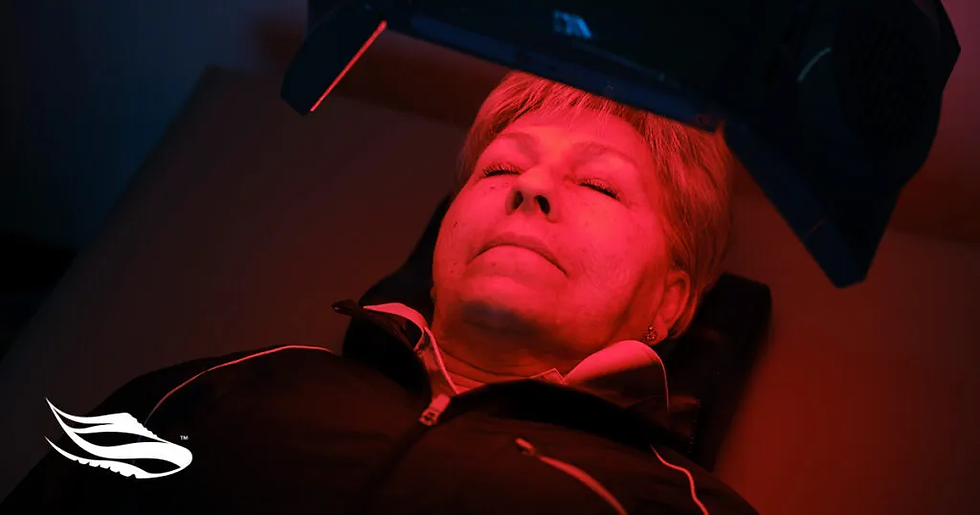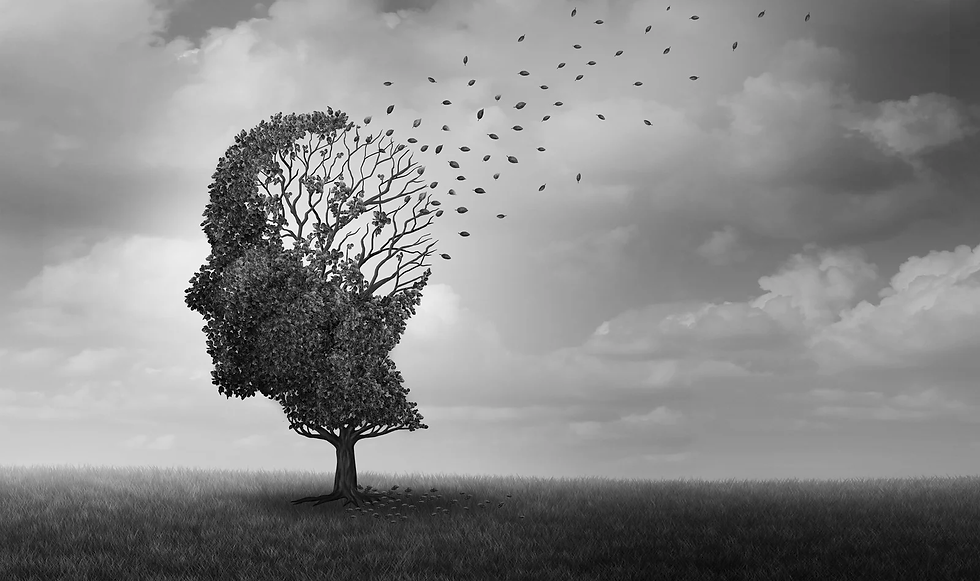Red Light Therapy: Shining a Light on Joint, Skin, and Muscle Health
- SilverSneakers
- Oct 13
- 3 min read

You’ve probably seen the red lights in gyms or wellness centers and wondered, “Does this really work?” Red light therapy is more than a trendy wellness fad — it’s a gentle, non-invasive way to give your body a little extra support. From easing sore joints to giving your skin a healthy glow, it’s worth learning how this therapy might fit into your daily routine.
As we age, keeping our bodies vibrant and healthy becomes increasingly important. Red light therapy (RLT) is an innovative treatment gaining popularity for its potential to support healing and rejuvenation, especially for older adults. This guide will help you understand what red light therapy is, how it works, and the benefits it offers.
What Is Red Light Therapy?
Red light therapy uses specific wavelengths of red or near-infrared light to stimulate cellular function. Unlike UV tanning beds, it doesn’t damage the skin. Instead, it penetrates the surface, energizing cells (especially mitochondria, the “powerhouse” of the cell) to increase adenosine triphosphate (ATP) production. This cellular energy boost can promote tissue repair, reduce inflammation, and support collagen production.
The origins of RLT date back to the early 20th century, with modern research gaining attention in the late 1960s through NASA’s studies on low-level laser therapy for plant growth and astronaut wound healing. Today, RLT is widely used in physical therapy clinics, dermatology practices, wellness centers, and even at home.
How Red Light Therapy Works
Red light therapy works at the cellular level:
Wavelengths matter: Shorter wavelengths (600–700 nm) target surface skin issues like fine lines and wrinkles, while longer wavelengths (800–1000 nm) penetrate deeper tissues to support joint and muscle health.
Energy boost: Light stimulates mitochondria to produce more ATP, aiding cell repair and reducing inflammation.
Non-UV therapy: Unlike blue or ultraviolet light, RLT safely enhances cellular function without damaging DNA.
Benefits for Older Adults
Red light therapy may offer adults 65+ several health benefits:
Joint and muscle health: May reduce stiffness and pain from osteoarthritis or general joint discomfort¹.
Skin health: Stimulates collagen production, reduces fine lines, and improves skin texture¹.
Wound healing: Can speed recovery from cuts, scrapes, or surgical incisions².
Inflammation reduction: Early studies suggest it can help lower inflammation in muscles and tissues².
Muscle recovery: By increasing ATP, it may reduce post-exercise soreness, allowing seniors to stay active longer.
Safety and Precautions
RLT is generally safe, but it’s important to be aware of potential side effects:
Mild redness, warmth, or skin irritation may occur.
People with light sensitivity disorders, those on photosensitizing medications, or individuals with a history of skin cancer should consult a doctor before trying RLT.
Tips for safe use:
Sessions typically last 10–20 minutes, several times per week.
Maintain a 6–12 inch distance from the device to prevent irritation.
Use protective eyewear when recommended.
Always consult your healthcare provider before starting RLT.
How to Access Red Light Therapy
You can try red light therapy in several ways:
Wellness centers and gyms: Many now have red light panels or booths.
Physical therapy or dermatology clinics: Offer targeted treatments for skin, joint, or muscle concerns.
At-home devices: Handheld wands or full-body panels are available. Consistency and device quality are key to seeing results.
💡 Pro Tip: Try professional sessions first to ensure it works for your needs before investing in home equipment.
Red light therapy is a promising, non-invasive tool for older adults looking to support joint comfort, skin health, and overall recovery. While it’s not a miracle cure, integrating RLT into your health and wellness routine can help you feel your best. Always consult your healthcare provider before starting any new therapy.








